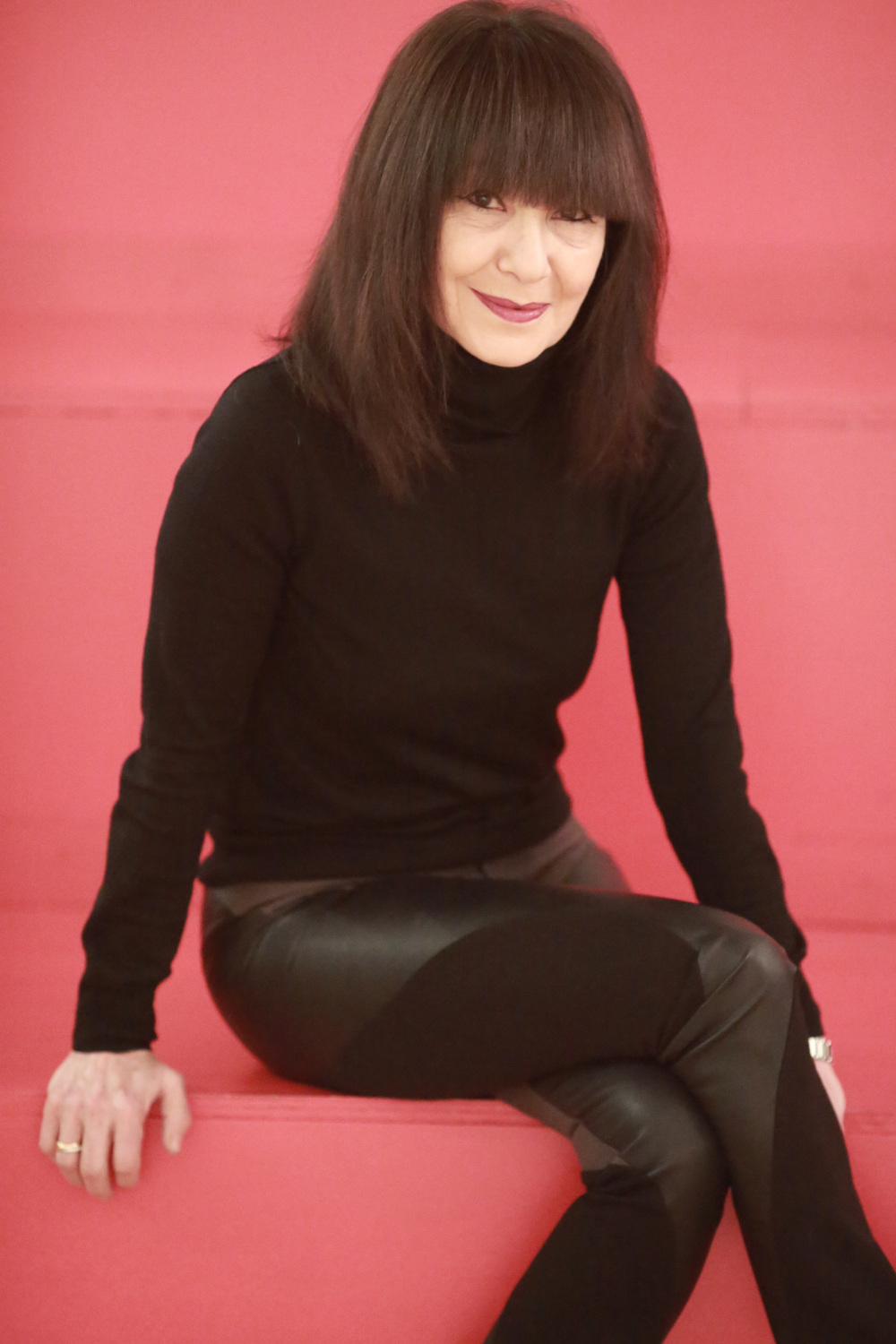
Since its initial release in 1979, RoseLee Goldberg’s groundbreaking book Performance Art: From Futurism to the Present has become required reading for art students around the world. But before the acclaim and fanfare it was just one visionary’s manifesto on the often overlooked role that live performance has played in the evolution of contemporary art. For Goldberg—an author, curator, professor, and all-around ambassador for the arts—performance is at the beating heart of artistic expression across cultures, eras, and modalities.
This artistic ethos is central to the work of Performa, the non-profit organization she founded in 2004 to promote and support performance art across disciplines. While the organization hosts lecture series, artist residencies, and educational events year round, it has garnered particular acclaim for the Performa Biennial. Every other November, the Performa team brings together talent from across cultures and practices to take part in a three-week celebration of art, performance, and history. Over the years, these performances have reached hundreds of thousands of viewers across the globe, and collaborated with hundreds of venues across New York City.
In the lead-up to Performa’s 20th-anniversary gala, Goldberg sat down with CULTURED to reflect on the creative highs of her organization’s first two decades. She also previews her aspirations for the organization as it enters a new chapter in its storied history.
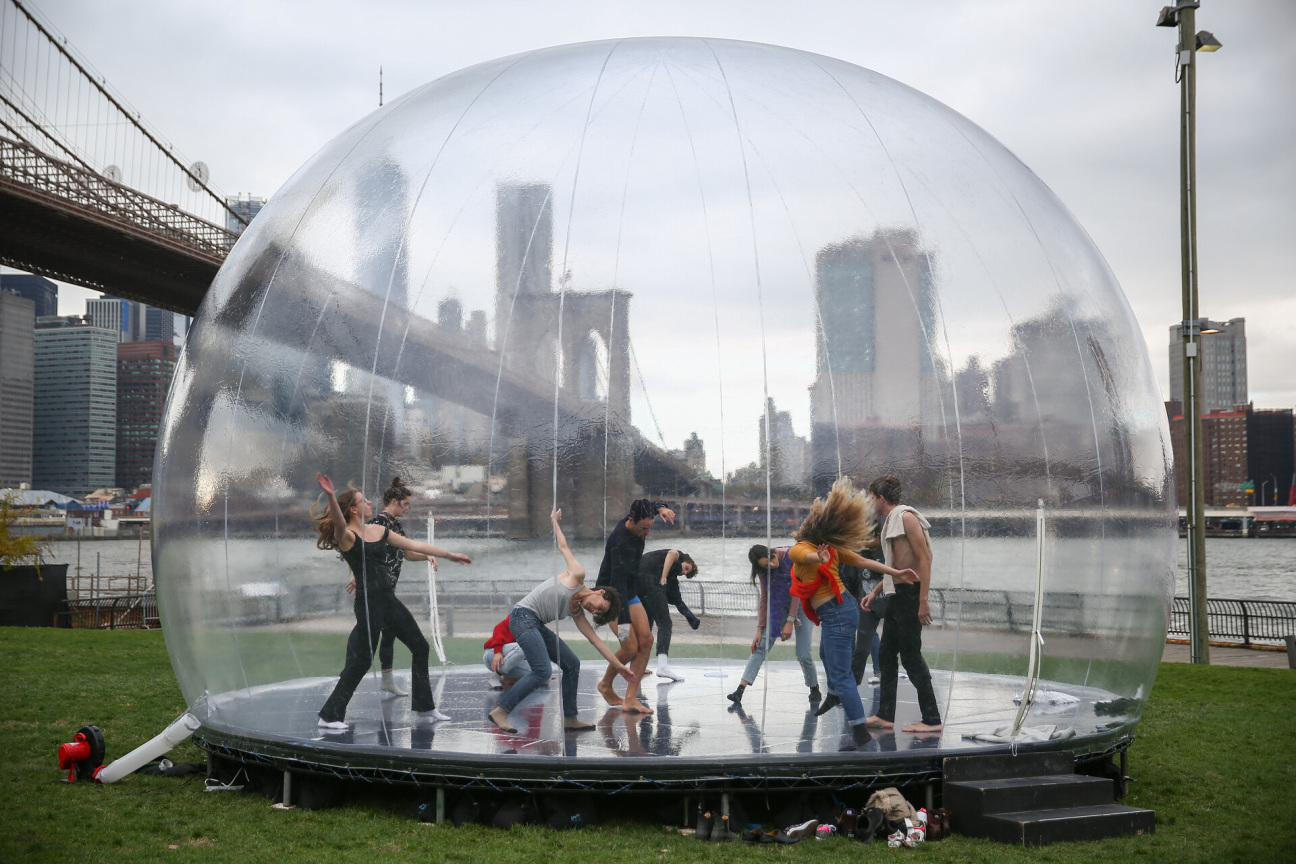
So much has changed in the art world and beyond since Performa was founded in 2004. How has your approach to producing multidisciplinary performances evolved over the course of the organization’s history?
Indeed, so much has changed since we presented the first Performa Biennial in November 2005! It was the first art biennial of its kind devoted to live performance by artists, to showing its art historical roots, and to creating new commissions for the 21st century.
The first Biennial comprised three extraordinary weeks at different venues across New York City, including MoMA, the Guggenheim, the Swiss Institute, the Studio Museum in Harlem, and Participant, as well as galleries such as Paula Cooper Gallery, Leon Koenig, Yvon Lambert, and many more, while artists included Vaginal Davis, Marina Abramovic, Laurie Simmons, DJ Spooky, Francis Alys, and Jesper Just, to name a few. Performa had an instant impact on the city, and it gained immediate global attention as well, bringing live performance to the forefront of the art world's consciousness.
From the beginning we showed that performance could attract large audiences across a broad cross section of publics. I don’t think our approach to producing has changed, rather we have gained enormous knowledge and experience from working with so many artists coming from different disciplines and sensibilities, in so many different settings—outdoors, at the beach, on top of Rockefeller Center.
The level of production, our commitment to each artist, providing extraordinary curatorial and producorial expertise, has changed the perception and experience of performance. Artists and arts institutions in New York and beyond have taken note of the level of the work we produce and are eager to participate. I really believe that, because of our work, performance is the new medium of the 21st century, the one place, amid a media-driven world, where public interface with artists takes place.
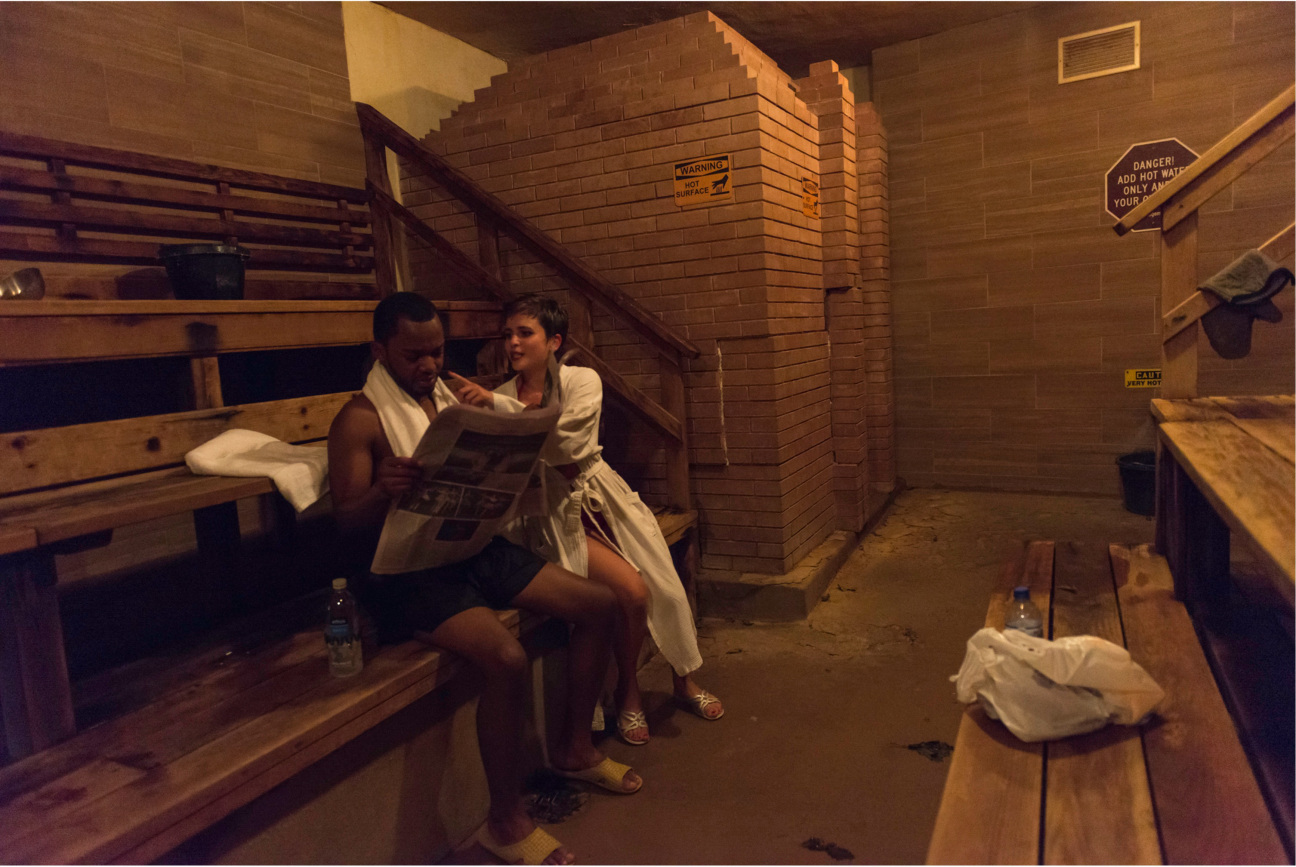
Performa prides itself on bridging the gap between different disciplines across art and live performance. What are some unique or unexpected collaborations in recent years that have stood out to you? Any that really exemplify what Performa is all about?
As an art historian, I have always looked at the cultural landscape across disciplines. But the way it's been taught for the past 100 years or so was as a conversation about painting and sculpture. Art history lacked a proper explanation as to where live performance fit into the larger narrative of the 20th century, be it Futurism or Dada or Surrealism, and that’s why I wrote my book Performance Art: From Futurism to the Present in 1979 as a kind of revisionist history, to insert live performance by artists into those critical moments where they were simply left out.
For example, performance was a crucial part of Zürich’s art scene during World War I with Cabaret Voltaire and the formation of Dada and its radical sensibilities, but it was never explained how that fit into the context of art history. So when I wrote Performance Art, I wanted to recover performance, show its aesthetic, intellectual, and social impact on the art of the time, and that’s the philosophy I’ve had since my beginnings as a writer and as director of the Royal College of Art Gallery in London, as a curator at the Kitchen, and now as the director of Performa.
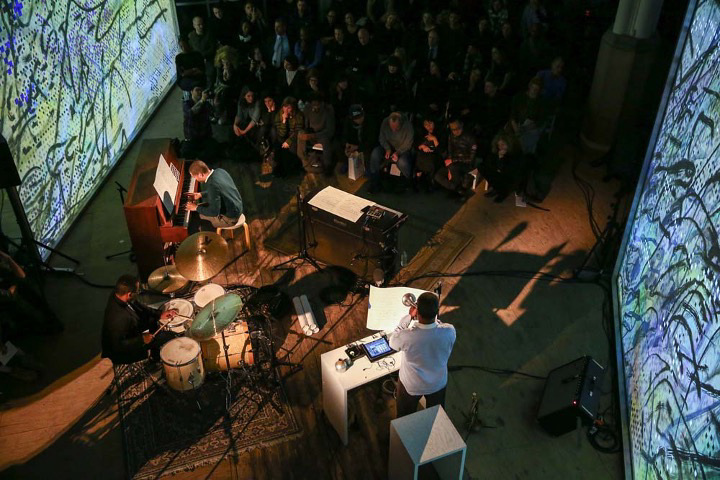
All the work we commission for the Performa Biennial is a surprise because we start from zero. Many of the artists we commission have never created a live performance before, so when our conversation begins, neither they nor we have any idea what will happen.
Rashid Johnson’s performance couldn’t have been more unexpected when he told us he wanted to present his version of Amiri Baraka’s Dutchman in the Turkish and Russian baths on 10th Street for his 2013 Performa commission. Or, working with Julie Mehretu in 2017 was also a total surprise. She had installed herself in a Harlem church in order to make 30-foot-tall paintings; the pianist and composer Jason Moran also moved his studio into the same space for several months. Julie and Jason responded to the shared situation by recognizing how the two meshed, her paintings and his music coming together in a completely unexpected and stunningly beautiful live work. Barbara Kruger’s Untitled (The Drop) and Untitled (Skate) took over New York in 2017 “like a kind of aerosol,” she said, filling the city in countless ways. Her intention was to reach the public at an entirely new scale. We worked with her to develop a school bus, metro cards, a skate park, billboards, skateboards, and hoodies. The fact that it became totally immersed in the public sphere was very exciting.

The 20th-anniversary gala will honor artists Paul Pfeiffer and Tschabalala Self. How do you view these two artists and their work in the broader context of what Performa stands for?
Both Paul Pfeiffer and Tschabalala Self are thrilling examples of what Performa stands for. I had seen Paul’s work way back in the '90s at The Project uptown with his small, almost miniature videos. I never forgot them because there was something that haunted me about the way he made videos using the absence of people in the film to somehow encapsulate how the media manipulates us. When I approached him to do a Performa commission, I was being intentionally provocative: Would he go to the opposite scale of the videos he had made thus far? And that’s exactly what we did. For his work, we took over the Apollo Theater and flew in 50 members of the University of Georgia’s Redcoat Marching Band with the remainder of the band playing via live-feed. It was a spectacular work, was immediately accessible, highly entertaining, and also profound, dealing as it did with the layers of race built into American football.
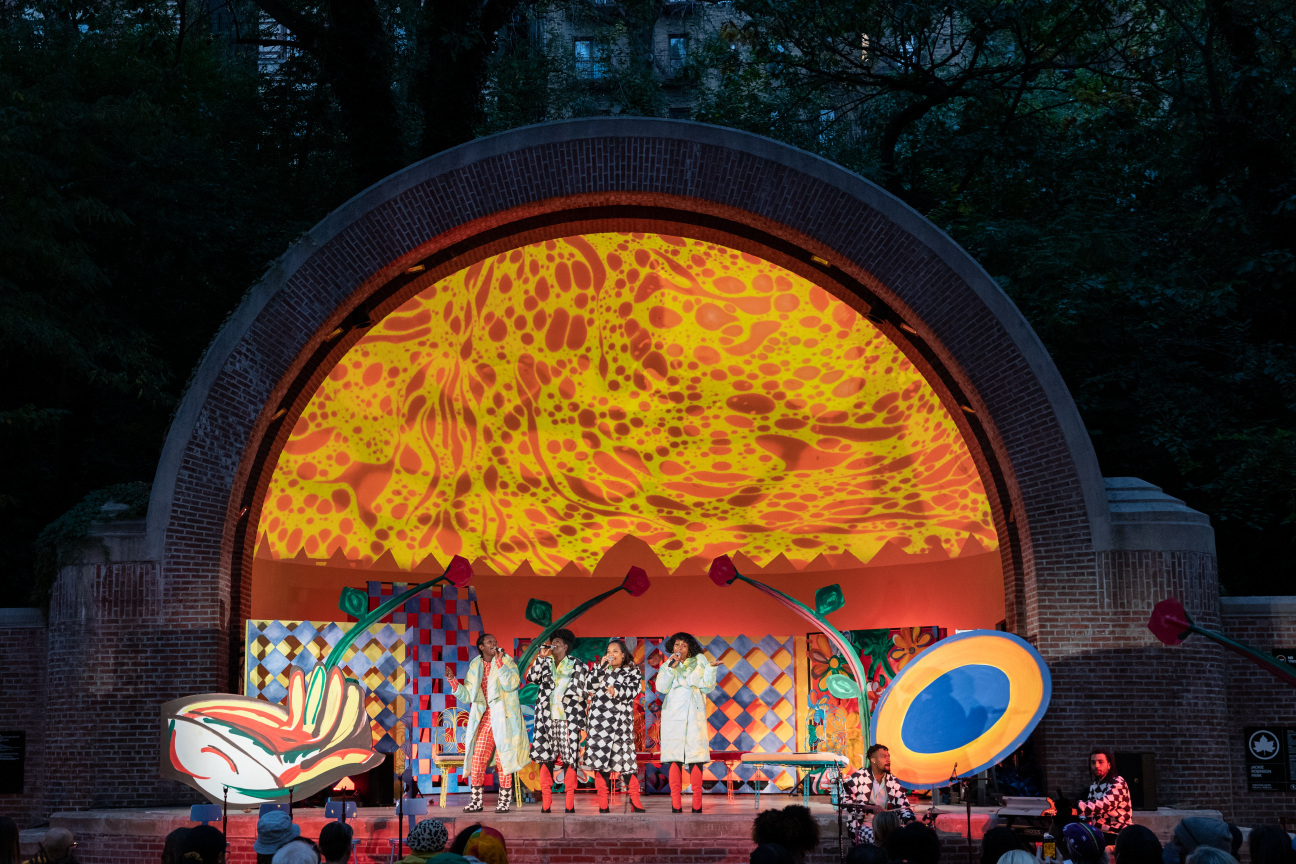
With Tschabalala, I’d seen her work many years ago in a group exhibition at the New Museum and immediately responded to the physicality and movement contained in her collages. As often is the case, it inspired me to think about what would happen if she were to be invited to do a live piece. So, her Performa commission began with an instinctual response to her early work, and a leap of faith. I was convinced that she would come up with something beautiful, and she did. Sounding Board was a live work that referenced her paintings and yet took her into new realms of music and design.
Both Paul and Tschabalala really exemplify what Performa stands for. We invite artists to take risks by working in a different medium than they ever have before. That’s where my mantra of “100% risk, 100% trust” comes from, because I think that’s the case for both the artists and Performa. That trust results in some thrilling productions.
Looking ahead, what are some of your goals for Performa in the coming years? Any new challenges you see in the road ahead?
We see many exciting possibilities as we begin our third decade. One is having a permanent hub in the city where people can gather as we do during the three weeks of the Biennial, as a home for our state-of-the-art digital Performa Archive and for archives from around the world. I see it as a place of information, education, and as a source for artistic inspiration. I don’t see "challenges"—not a word I use. I’m always looking for solutions and ways to produce an extraordinary idea or vision. I don’t look at life through the lens of challenges, but that’s just the optimist in me.










 in your life?
in your life?

